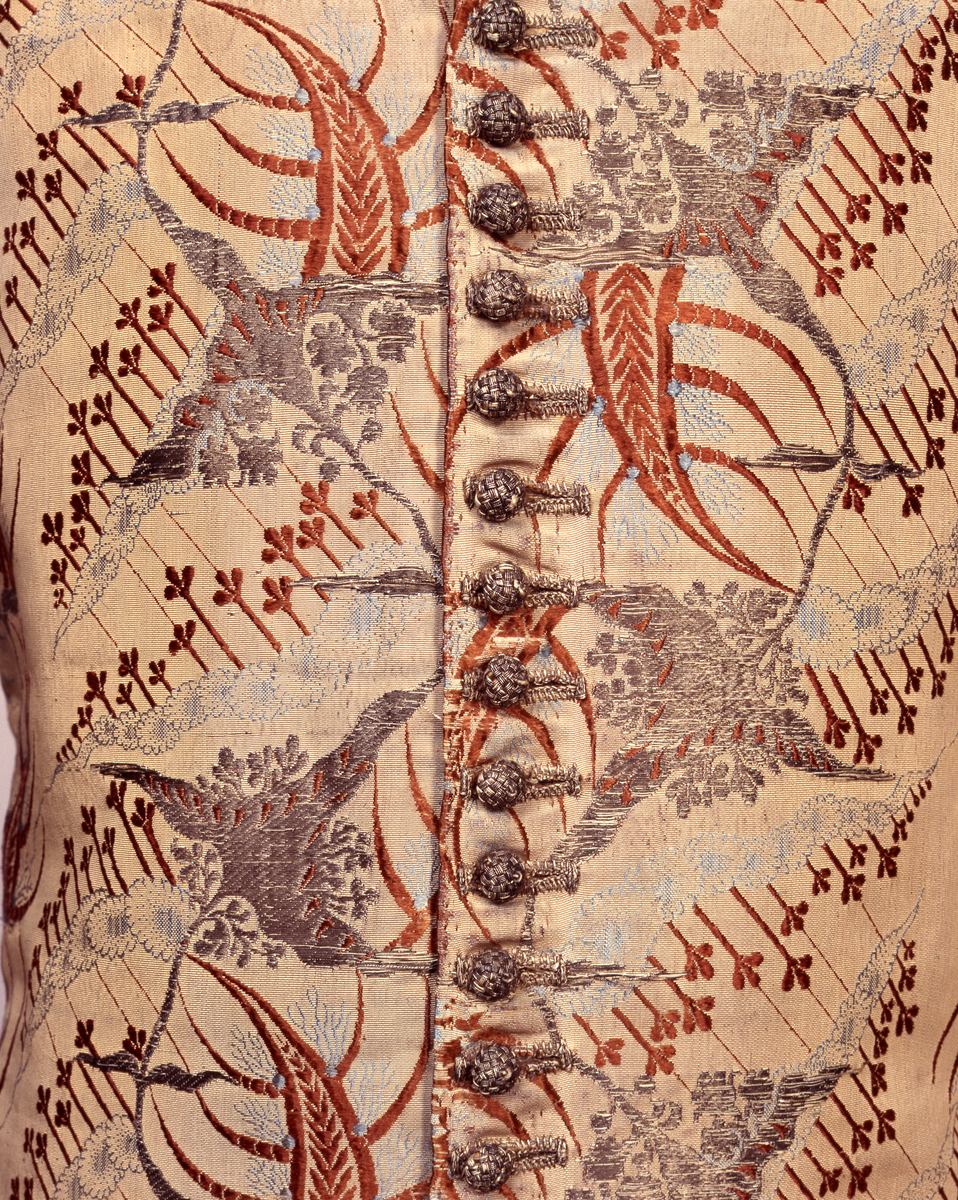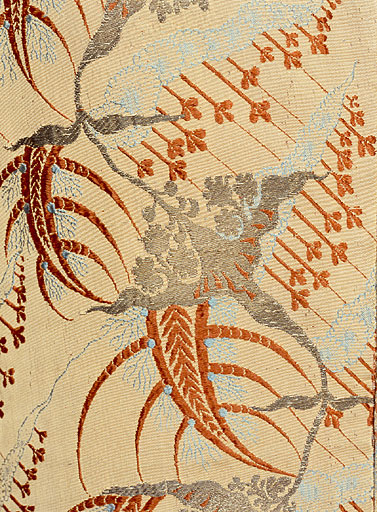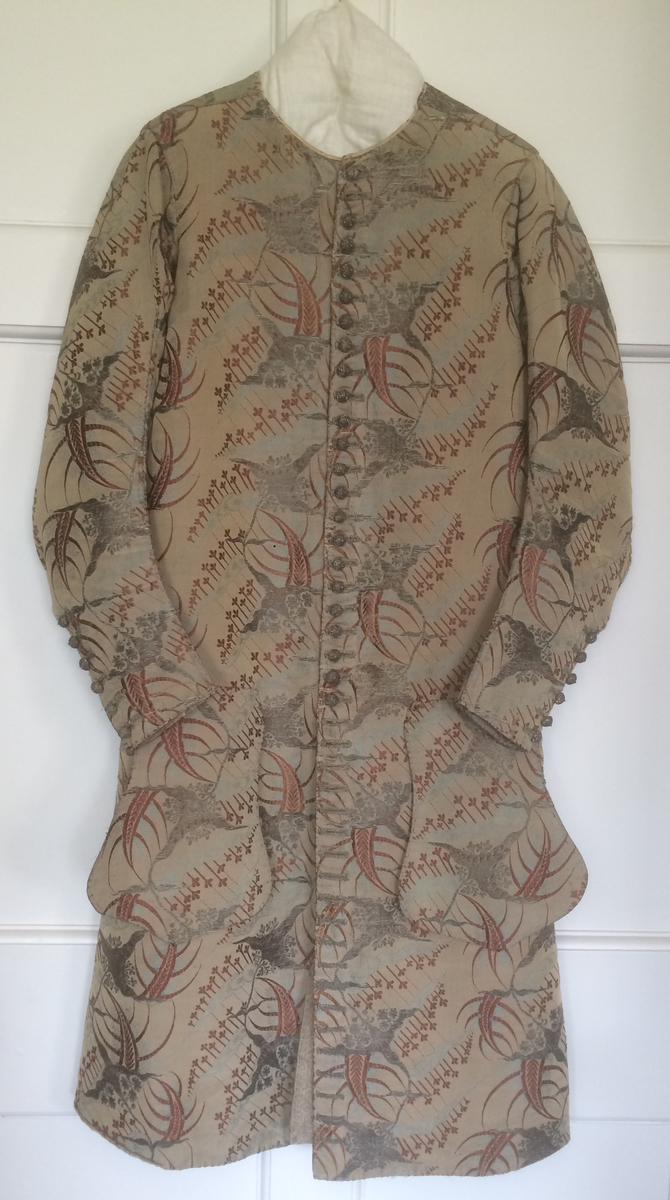waistcoat, sleeved
Summary
Fawn silk brocade with woven "bizarre" design in brown, pale blue and silver thread, lined fawn silk with figured stripe, interlined brown linen. Fronts each in one section flared at sides below waist, fastening from neck to hem with 43 small silver thread buttons and buttonholes stitched with silver thread (the 10 lowest buttonholes not cut). Pocket, brown linen, each side, with vertical slit under hanging flap, wider at bottom and caught down at tip. Side seams open below hip; silk tape binding at neck; long sleeves in two sections, fastening from wrist to elbow with six buttons. Piece of linen inscribed in ink, "Fassett, Kingston on Thames", stitched to back lining.
Display Label
The eighteenth century monied male was often a peacock, eager to display his taste and wealth, and fond of lavishly decorated or patterned fabrics, and bright striking colours. The usual outfit remained the three piece suit of coat, waistcoat and breeches until 1800, when trousers began to replace breeches. Fashionable suits were usually plain woollen facecloth for practical urban or rural wear; woven silks for more formal evening occasions; and highly trimmed and embroidered silk satins and velvets for court wear. Waistcoats were sleeved until the 1740s, then sleeveless as today, and they were often embroidered to match the coat. Looser banyans or gowns were worn for relaxing in the home, when the wig would be replaced by a comfortable "nightcap". Working men wore jackets and waistcoats of hard-wearing fustian (cotton and linen mix) or wool, with breeches of leather or later cheap cotton corduroy, "thicksett" or velveret.
Object Name
waistcoat, sleeved
Date Created
1705-1715
Dimensions
Length: 105cm
accession number
1961.275
Place of creation
Spitalfields
Medium
Legal
© Manchester Art Gallery






